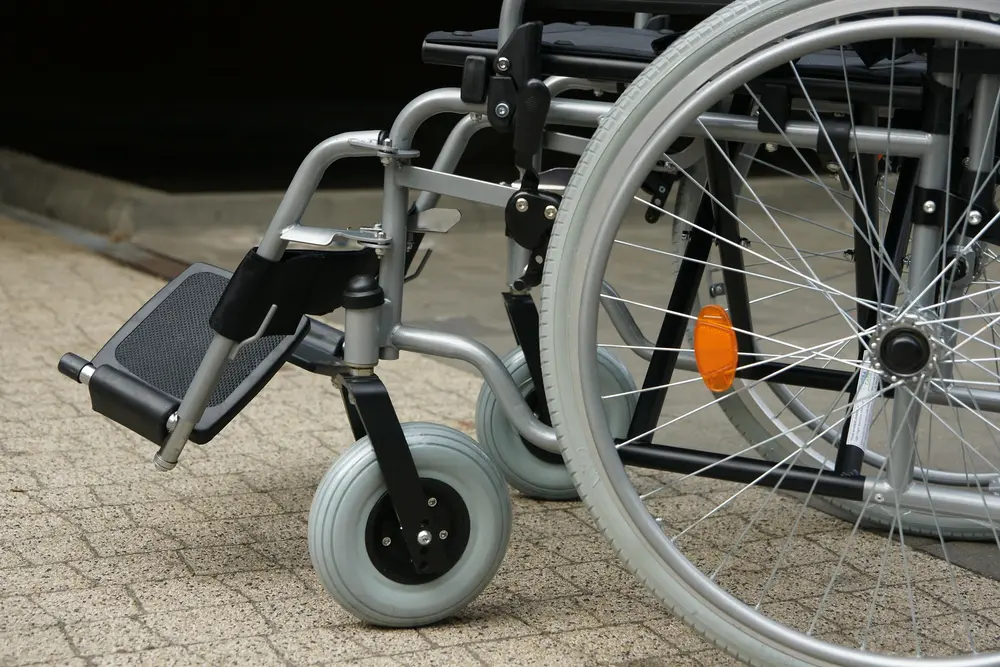Major strides have been made in the fight against Ankylosing Spondylitis (AS). Still, this impairment can cause severe restrictions such as pain, fatigue and loss of motion. When these symptoms become so pronounced that they make full-time work impossible, it may be time to consider filing for Social Security Disability Insurance and/or SSI disability benefits. These are the two disability programs administered by the Social Security Administration. But how does one qualify for benefits? In this article, we’ll give a brief overview of the Social Security Administration (SSA) 5-step sequential evaluation process for determining adult disability, with a focus on AS.
At step 1, SSA considers your work activity to determine if you are engaging in what is called “substantial gainful activity (SGA),” This is a term used to describe a level of work activity and earnings. Work is “substantial” if it involves doing significant physical or mental activities or a combination of both. “Gainful” work is work that is performed for pay or profit. If you are engaging in SGA, SSA will find that you are not disabled. If you are not engaging in SGA then SSA will proceed to the step 2.
At step 2, SSA will consider the severity of your medically determinable impairment(s). A severe impairment must significantly limit your physical and/or mental ability to perform basic work activities. Basic work activities include: (1) Physical functions such as walking, standing, sitting, lifting, pushing, pulling, reaching, carrying, or handling; (2) Capacities for seeing, hearing, and speaking; (3) Understanding, carrying out, and remembering simple instructions; (4) Use of judgment; (5) Responding appropriately to supervision, co-workers and usual work situations; and (6) Dealing with changes in a routine work setting. Your physical and/or mental impairment(s) must have lasted, or be expected to last, for a continuous period of at least a year. SSA will consider the combined effect of your impairments at this step. If you have a severe impairment(s), the inquiry proceeds to step 3.
At step 3, SSA determines whether your impairment(s) meet, or equal in severity, the criteria of one of the listed impairments in its regulations. Ankylosing spondylitis is listing 14.09, which is contained in the Inflammatory Arthritis section of the Immune System Disorders listing (14.00). Section 14.00D6b states in part: “In adults, inflammatory arthritis involving the axial spine may be associated with disorders such as: (i) Reiter’s syndrome; (ii) Ankylosing spondylitis; (iii) Psoriatic arthritis; (iv) Whipple’s disease; (v) Behçet’s disease; and (vi) Inflammatory bowel disease.
To satisfy the listing requirements for AS or other spondyloarthropathies, there must be:
- Ankylosis (fixation) of the dorsolumbar or cervical spine as shown by appropriate medically acceptable imaging and measured on physical examination at 45° or more of flexion from the vertical position (zero degrees); or
- Ankylosis (fixation) of the dorsolumbar or cervical spine as shown by appropriate medically acceptable imaging and measured on physical examination at 30° or more of flexion (but less than 45°) measured from the vertical position (zero degrees), and involvement of two or more organs/body systems with one of the organs/body systems involved to at least a moderate level of severity.
This can be a difficult requirement to satisfy. If one’s AS does not satisfy the requirements of this listing, however, one still can establish disability. Before proceeding to step 4, however, SSA will evaluate the claimant’s medical impairments and the restrictions that they cause. This is called the residual functional capacity or RFC. The RFC is an assessment of what an individual can still do despite their limitations. It considers the extent to which an individual’s medically determinable impairment(s), including any related symptoms, such as pain, fatigue or depression, may cause physical or mental limitations or restrictions that may affect one’s capacity to do work-related physical and mental activities.
After the Residual Functional Capacity is determined, SSA will consider your past relevant work, at step 4, in light of this RFC to determine if you still can perform that work. Past relevant work is defined as work that you have done in the past 15 years, that was substantial gainful activity, and that lasted long enough for you to learn it. So, for example, if your past relevant work required you to be on your feet for at least 6 hours per day and lift up to 20 pounds occasionally, but your RFC restricts you to the sedentary exertional capacity, you will be unable to perform that past relevant work. If you are unable to perform any of your past relevant work, the evaluation moves to step 5.
At step 5, SSA considers other factors to determine whether you can make an adjustment to other work. If you can make an adjustment to other work, SSA will find that you are not disabled. If you cannot make an adjustment to other work, SSA will find that you are disabled. At step 5, SSA will once again consider your RFC. SSA will also consider other factors, which are your age, education and work experience. They will determine if these factors allow you to make an adjustment to other work. For example, if you learned skills in past work that are transferable to other work that you can perform given your RFC, you may be found not disabled. At Step 5, SSA will apply the “Medical-Vocational Guidelines” to decide whether you are disabled. The guidelines consider one’s age, education and transferable skills from past relevant work. SSA employs both medical and vocational consultants to assist it in weighing these factors when making a decision in your case.
We hope that this article has given you some insight into the Social Security Administration’s analytical framework for determining disability. These are just the basics. A separate article could be written about each of these steps.







